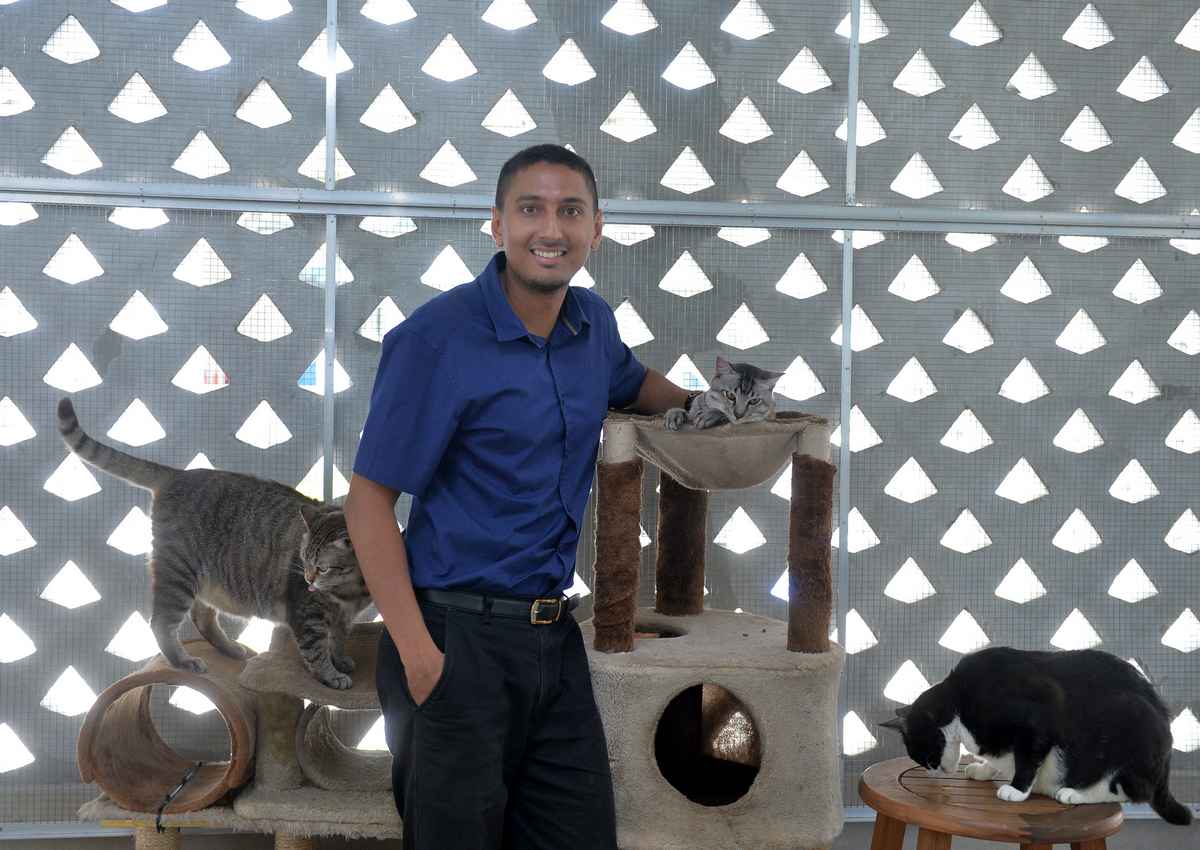SPCA executive director heads new initiative to reduce cases of euthanasia on healthy animals
Dog person. Cat person. Mr Jaipal Singh Gill does not care which way you swing.
Even if you are neither, the 33-year-old acting executive director of the Society for the Prevention of Cruelty to Animals (SPCA) feels it should not stop you from caring about the welfare of animals, from preventing abuse of domestic pets to cruel practices in livestock or chicken farms.
Mr Gill comes to SPCA at a time of greater awareness of animal abuse and a growing number of organisations devoted to saving and rehoming stray dogs and cats.
Their emphasis on rehoming flies in the face of SPCA’s age-old euthanasia policy, which is what Mr Gill hopes to change during his tenure – to move towards a no-kill directive not just for the association but nationwide.
How did you become interested in animal welfare?
I’ve had pets since I was seven. Guinea pigs, terrapins, dogs and fish. Except cats. My mother didn’t like them and said I had to choose between her and a cat. I chose the cat but that didn’t work.
But like I said, having pets isn’t the same as looking after their welfare.
You see, I grew up in a loving middle-income family and my grandmother lived with us. I thought everyone lived the same way until my mother took me on one of her home nursing visits when I was 11.
It was an eye-opening experience to see how not everyone had the same life as I did. It awakened my interest in social work.
When I was 14, my older brother returned from his studies in Australia and lent me some literature on the treatment of factory animals. I realised there was a world of suffering out there I never knew about, and I wanted to do something about it.
Why SPCA, with its kill-policy, when you could have joined or started any other organisation that doesn’t euthanise pets?
That’s a good question.
This is my fourth year with SPCA. In the first couple of years, I was quite affected by our euthanasia policy. I still am now, but I realised that running away from the problem is not going to solve it.
Euthanasia isn’t an SPCA problem – we didn’t create it. We’re shouldering the burden that’s been placed on us to deal with the problem, which is pet overpopulation.
It’s very easy to go no-kill overnight. We just say: “Sorry, we’re at capacity and we can’t take any more animals, you can do whatever you want with it.”
But that’s not the stance we’re taking. That’s why I’m here – because I can see the potential of us being able to tackle the problem at its root and reduce euthanasia to zero.
In fact, we’ve just launched “Getting to Zero”, whose aim is to get to zero euthanasia of healthy animals in Singapore.
It’s a bold goal, but one that we believe in very strongly because a healthy animal that’s euthanised is one too many. That’s something we want to see capped to zero.
What’s the plan for Getting to Zero?
It’ll come into effect in 2017. Because it’s such a big and complex problem, the solutions will be spread out over the year in four phases.
The first is promoting adoption, because the more people adopt, the more lives will be saved. The next phase will be promoting responsible pet ownership.
Third is to get people to be more accepting of street dogs and cats to reduce culling, and the last is to deal with the pet industry, especially breeding.
What are the chances of success?
In the last five to 10 years, animal welfare in Singapore has come a long way. The landscape has changed entirely. I think that’s very positive.
I’m seeing a lot more people, youths especially, stepping forward and wanting to be a part of this movement. So I see a bright future for animal welfare and I’m really glad to be a small part of that process.

This article was first published on Nov 12, 2016.
Get The Business Times for more stories.





































